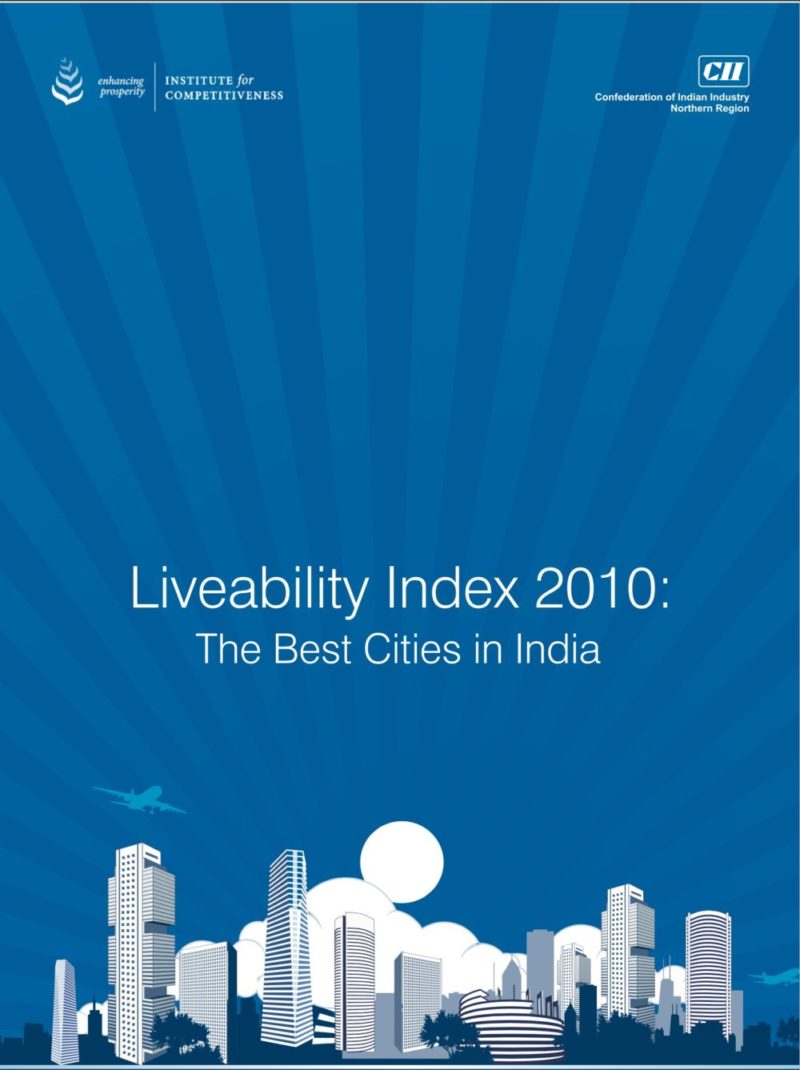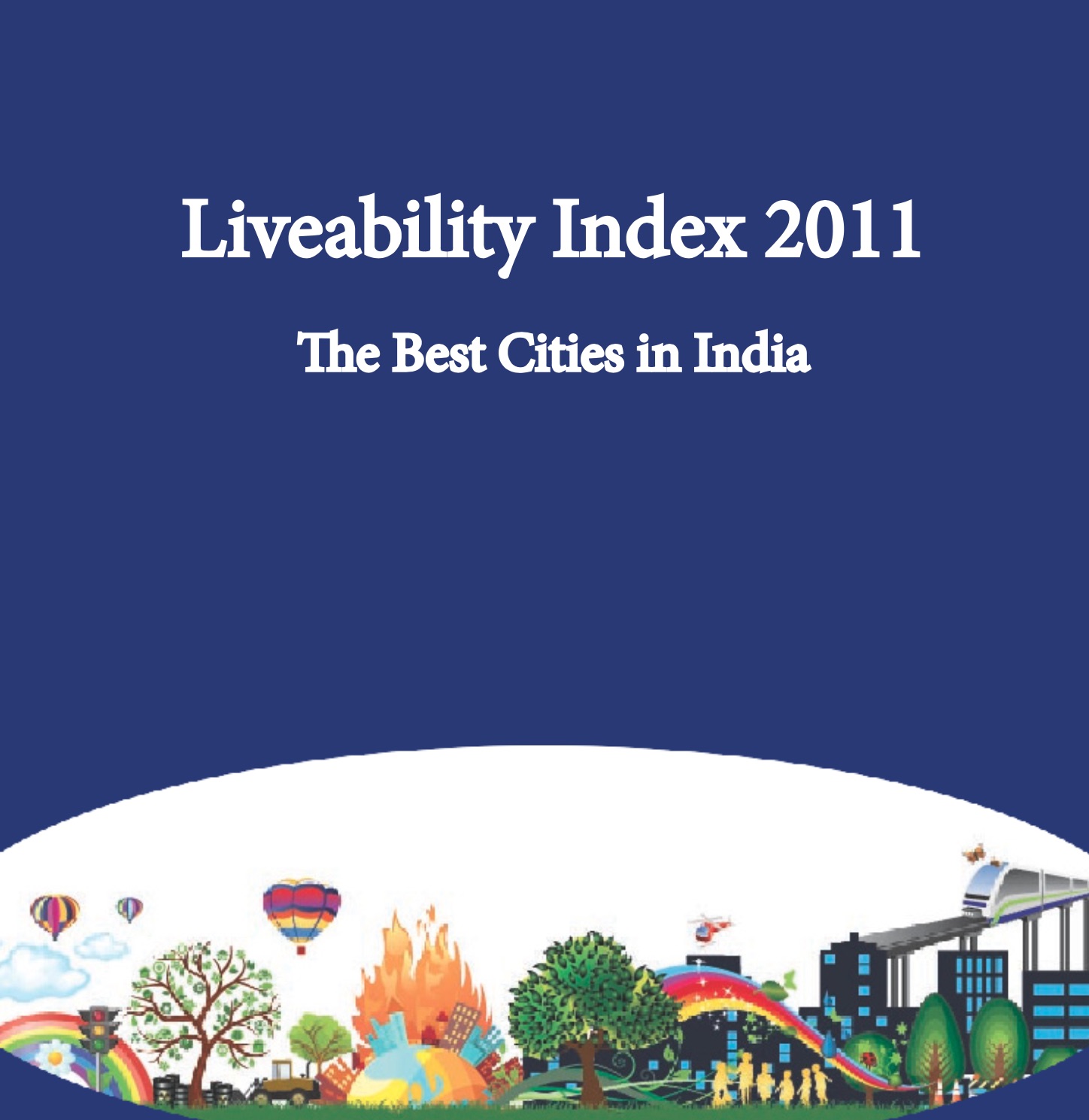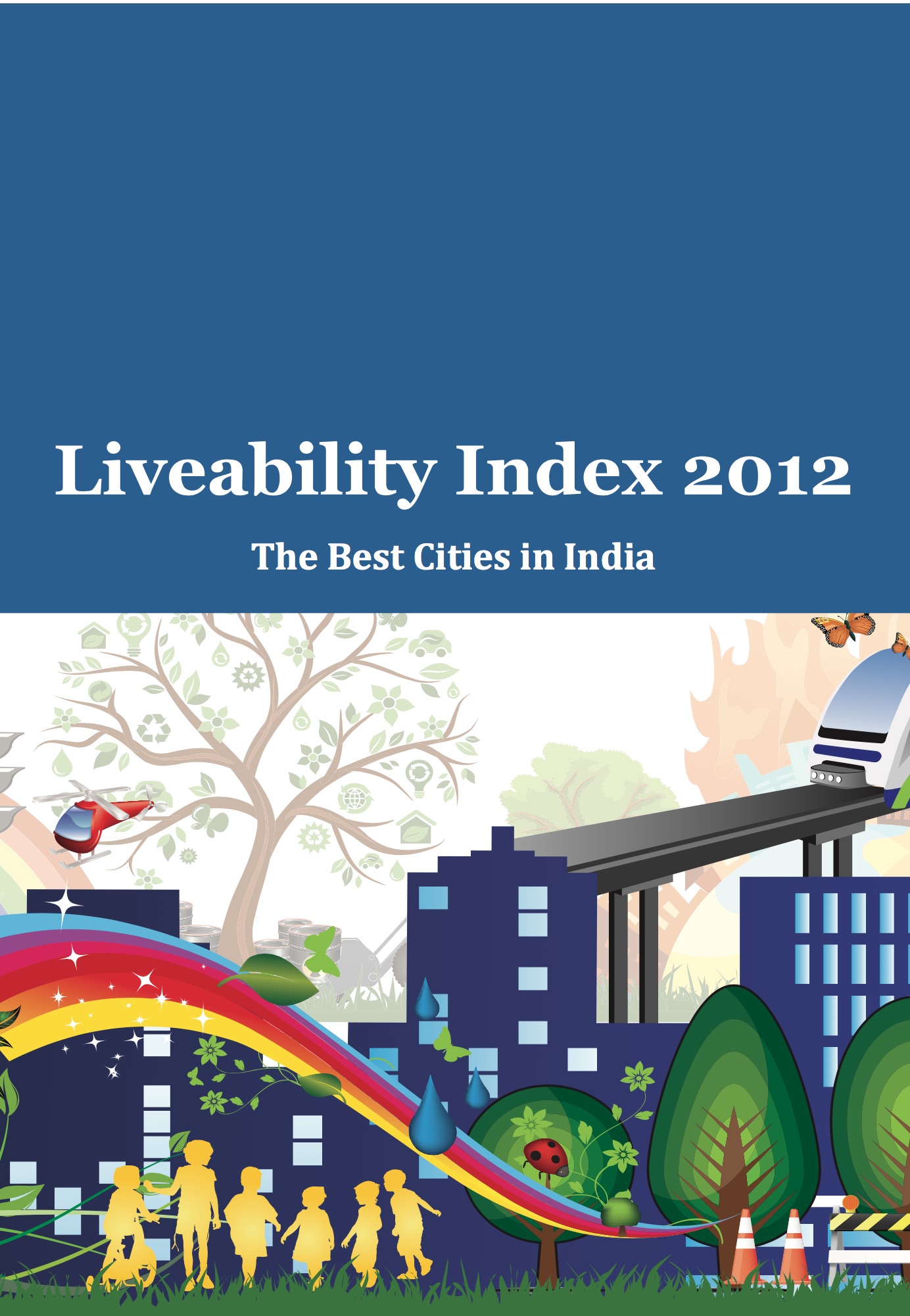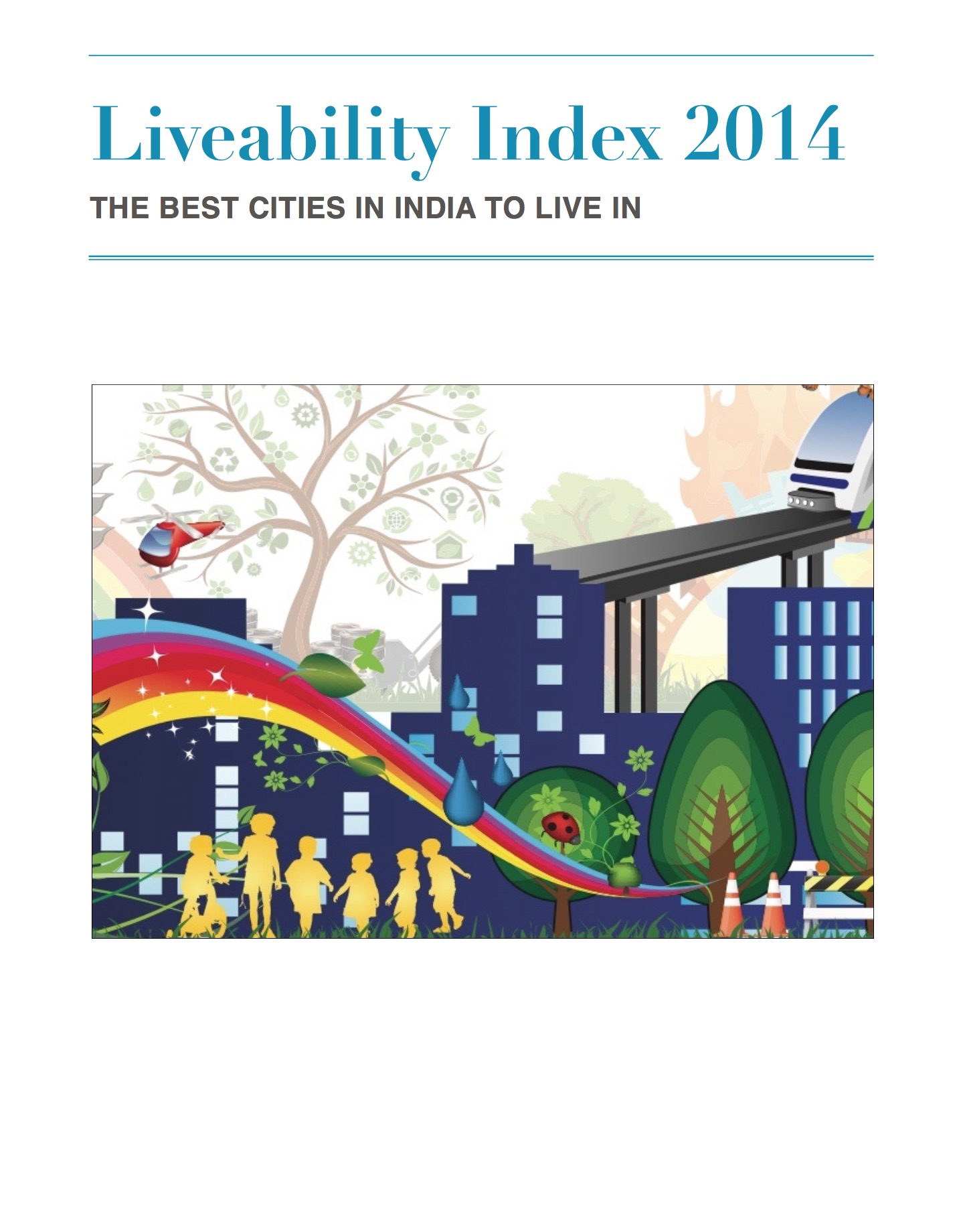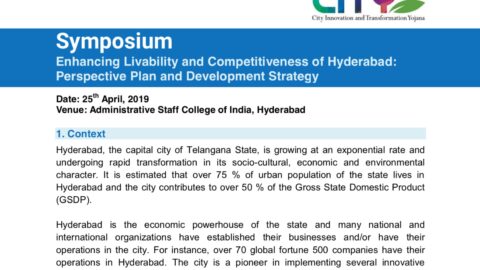Methodology
Liveability can be defined as, “the potential of a city to offer favorable conditions to its residents and others on the parameters of social, natural, economic and physical environment”. The liveability index draws its outline on a similar note. It determines the degree of liveability of cities in India. In other words, it is an array of different functions that are directly or indirectly related to livelihood of a resident. It is supported by an integrated theme containing equity, dignity, accessibility, conviviality, participation and empowerment.
The index is a holistic approach towards understanding and identifying the
components of liveability that are acting as a catalyst or caveat in a region’s growth agenda. It covers urban as well as rural areas of a city thus mapping the entire region prudently on qualitative as well as quantitative factors.
The model is build upon eight core pillars. They are demographic, education,
health and medical standards, safety, housing option, socio-cultural-natural
environment, economic environment, and planned environment. These pillars are then branched into 20 constituent sub-pillars, which consist of indicators that map the factor quantitatively.
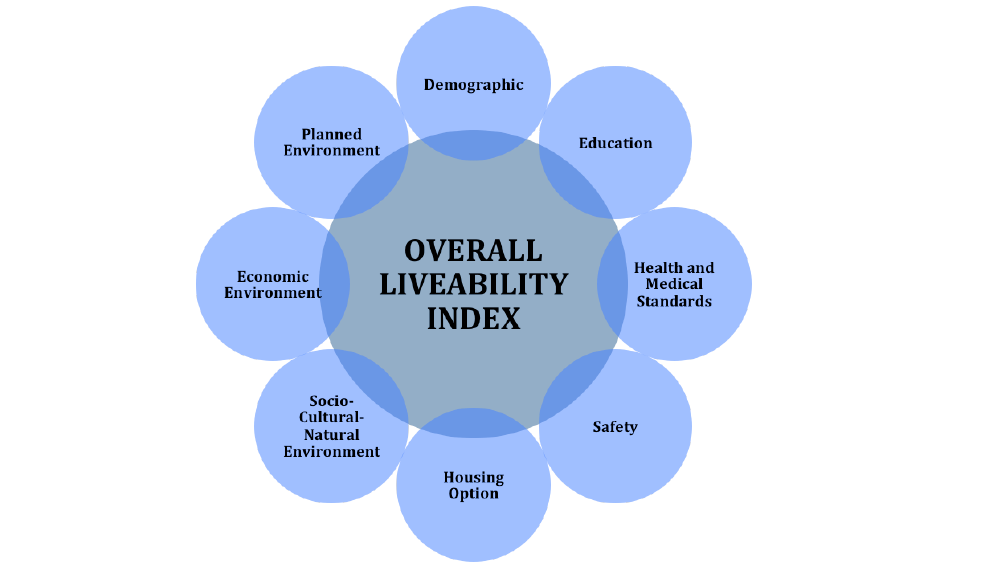
Reports
-
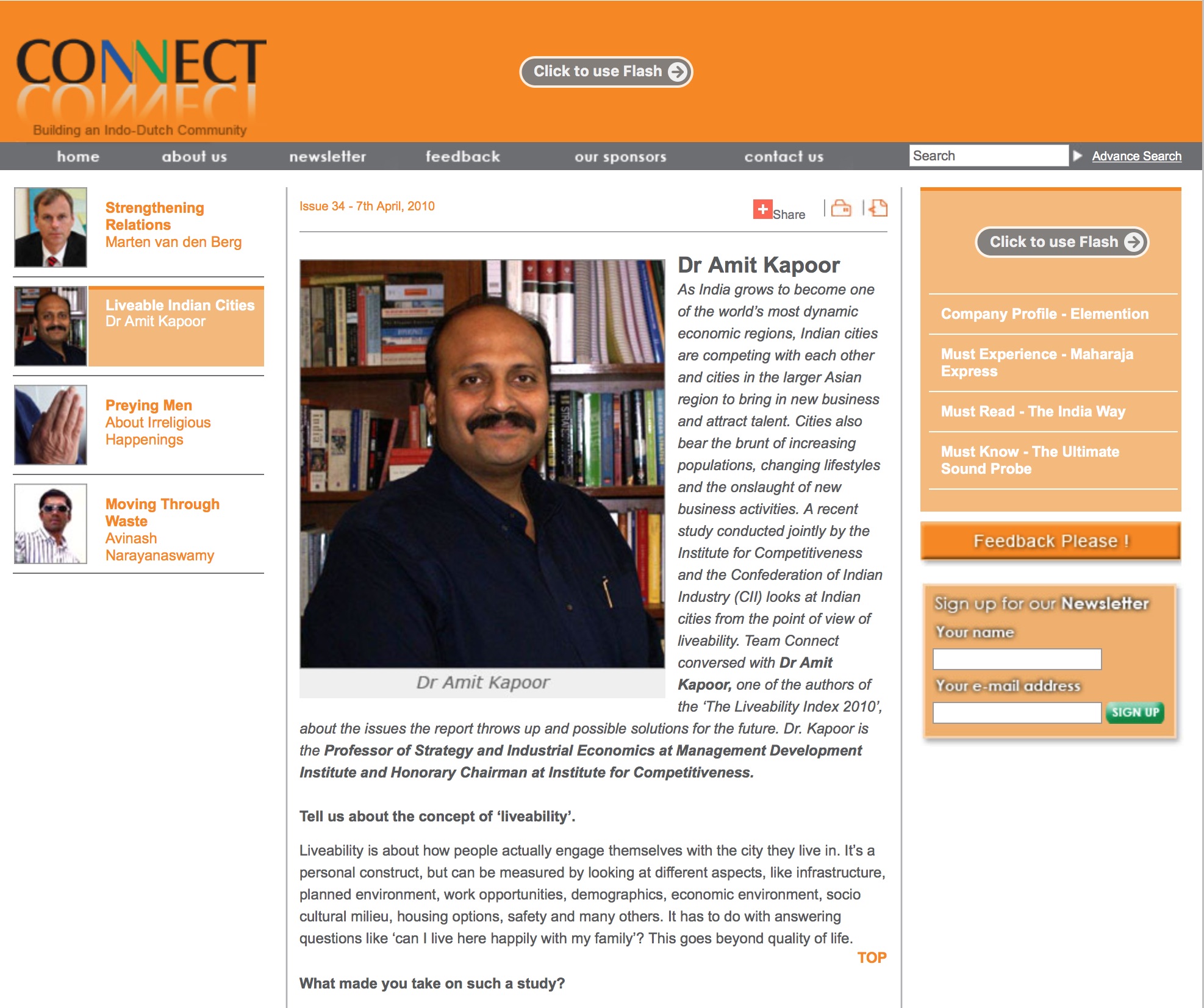 Indo Dutch Connect in an interaction with Dr. Amit Kapoor
Indo Dutch Connect in an interaction with Dr. Amit Kapooranemptytextlline
-
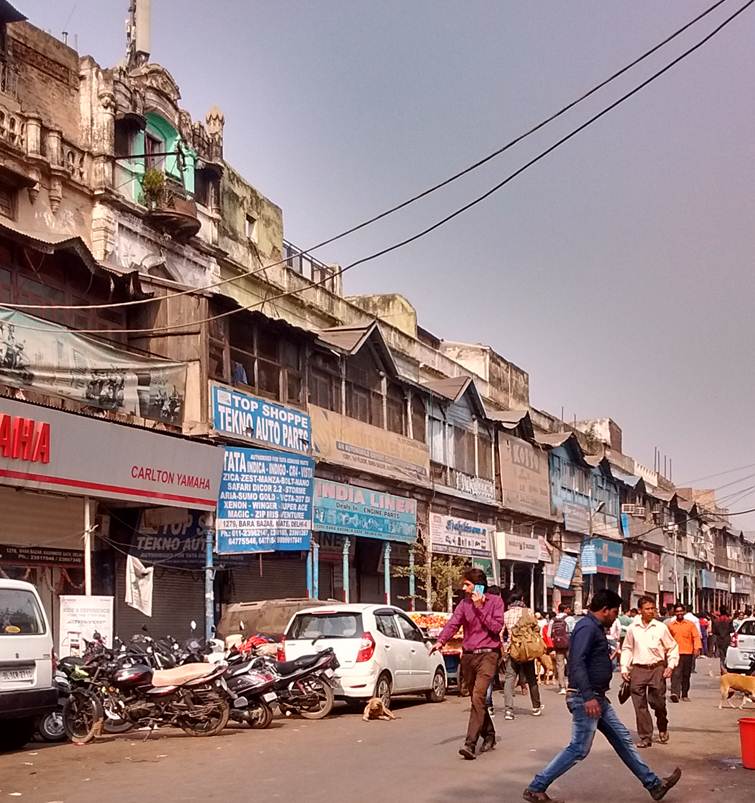 Indian Capital ‘New Delhi’ ranks first in the Liveability Index...
Indian Capital ‘New Delhi’ ranks first in the Liveability Index...anemptytextlline
-
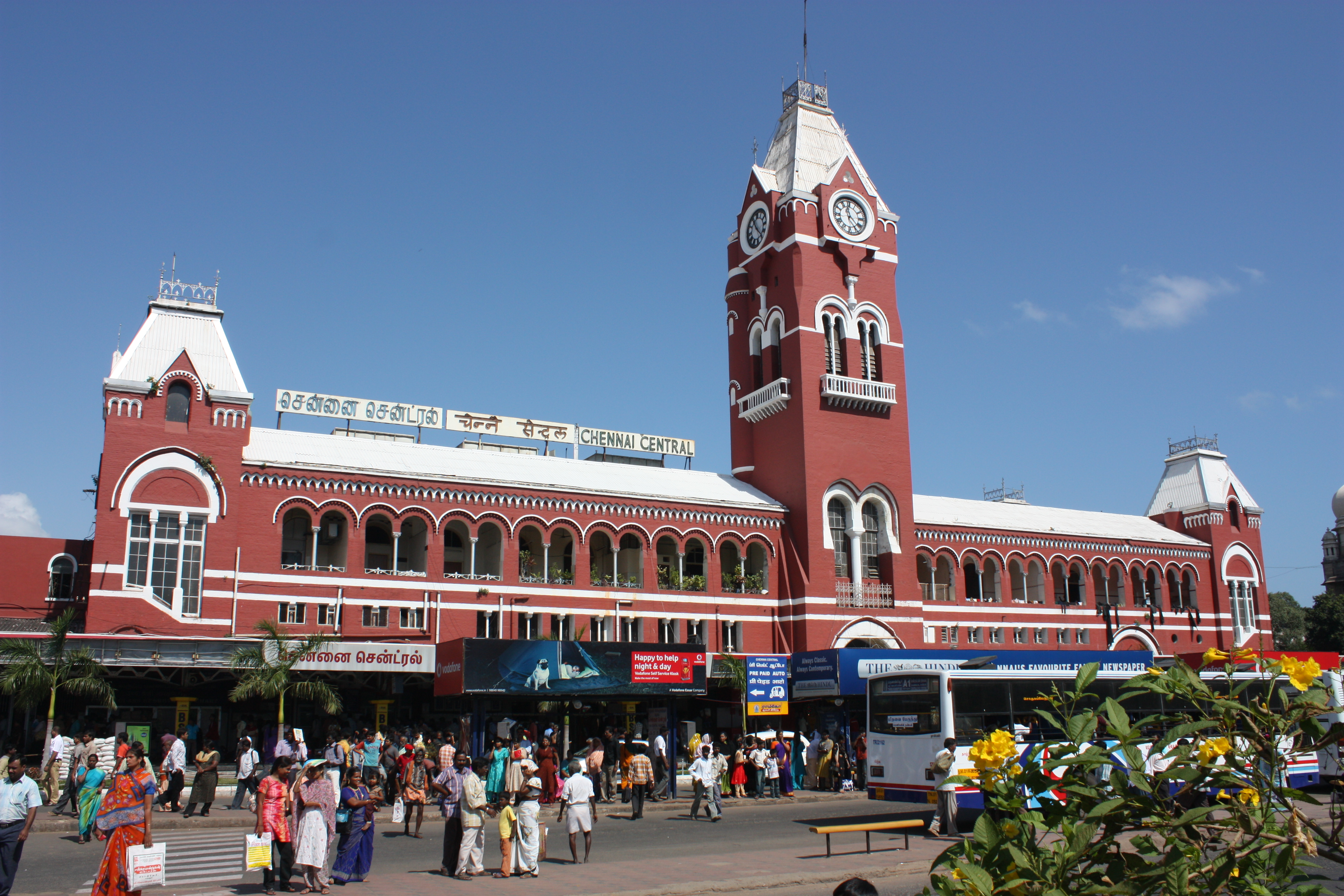 New Delhi falls 12 places and Chennai emerges as the...
New Delhi falls 12 places and Chennai emerges as the...anemptytextlline
-
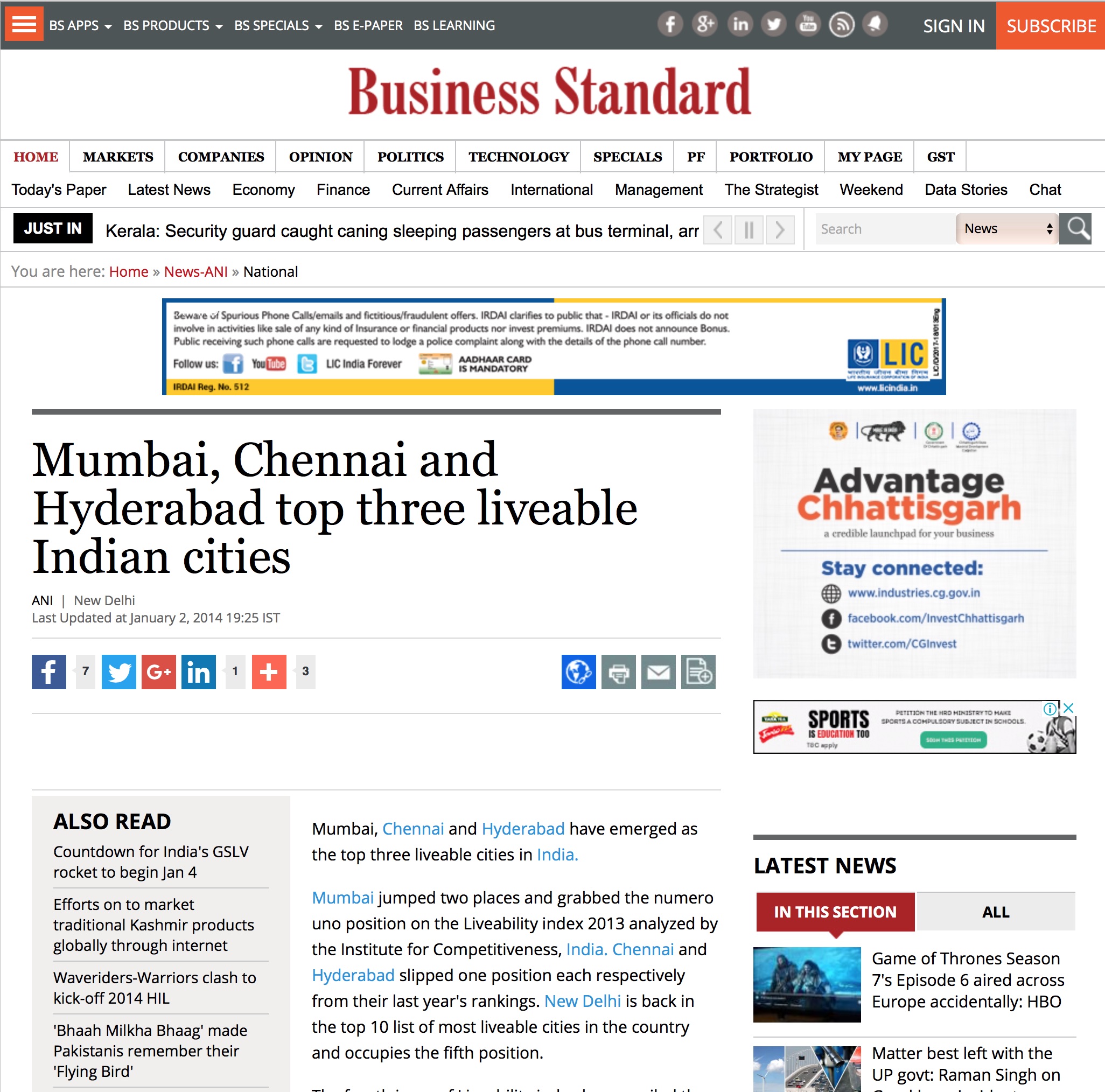 Mumbai, Chennai and Hyderabad top three liveable Indian cities
Mumbai, Chennai and Hyderabad top three liveable Indian citiesanemptytextlline
-
 Mumbai, Chennai and Hyderabad are the Top Three Liveable Cities...
Mumbai, Chennai and Hyderabad are the Top Three Liveable Cities...anemptytextlline
-
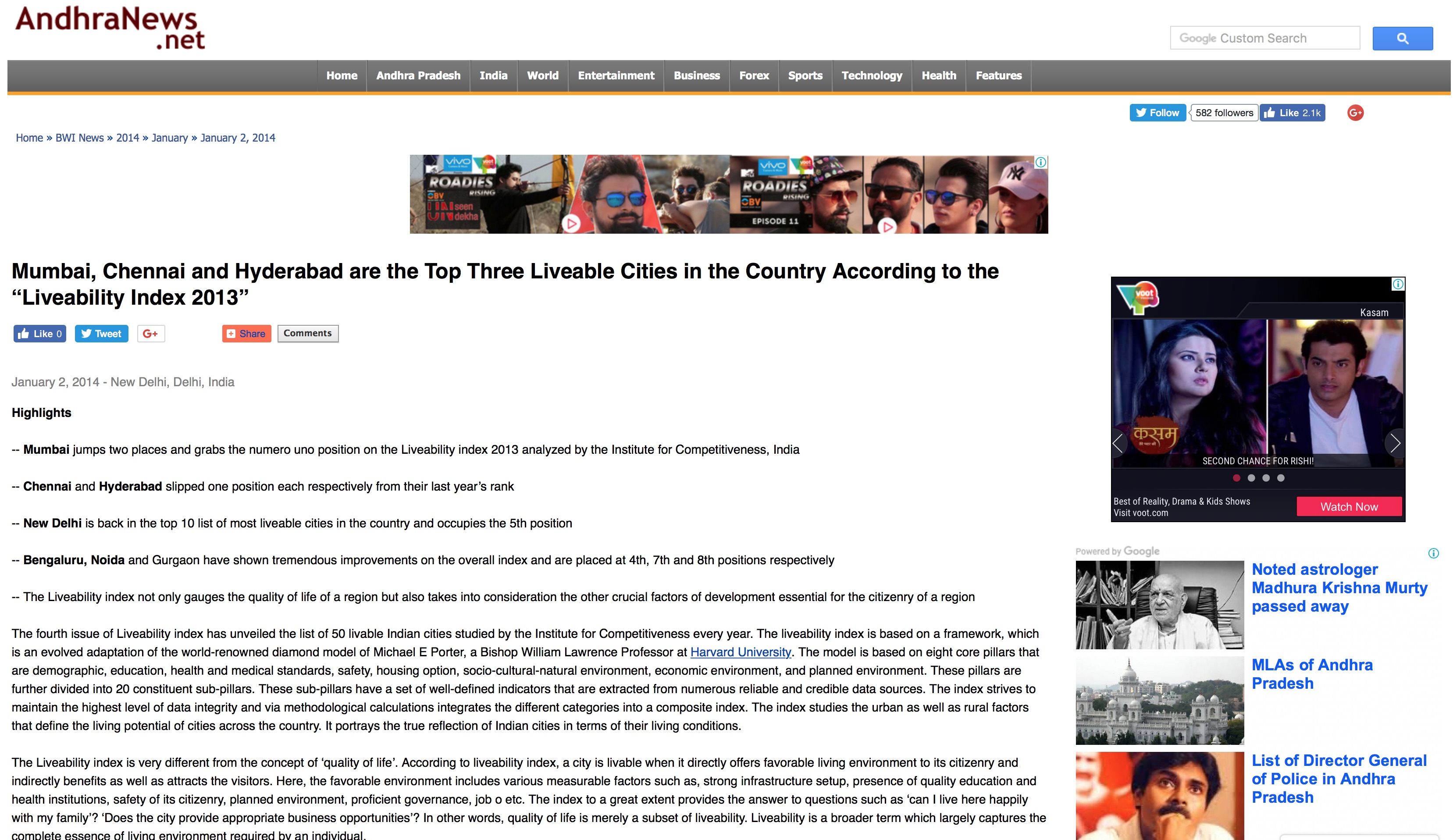 Mumbai, Chennai and Hyderabad are the Top Three Liveable Cities...
Mumbai, Chennai and Hyderabad are the Top Three Liveable Cities...anemptytextlline
-
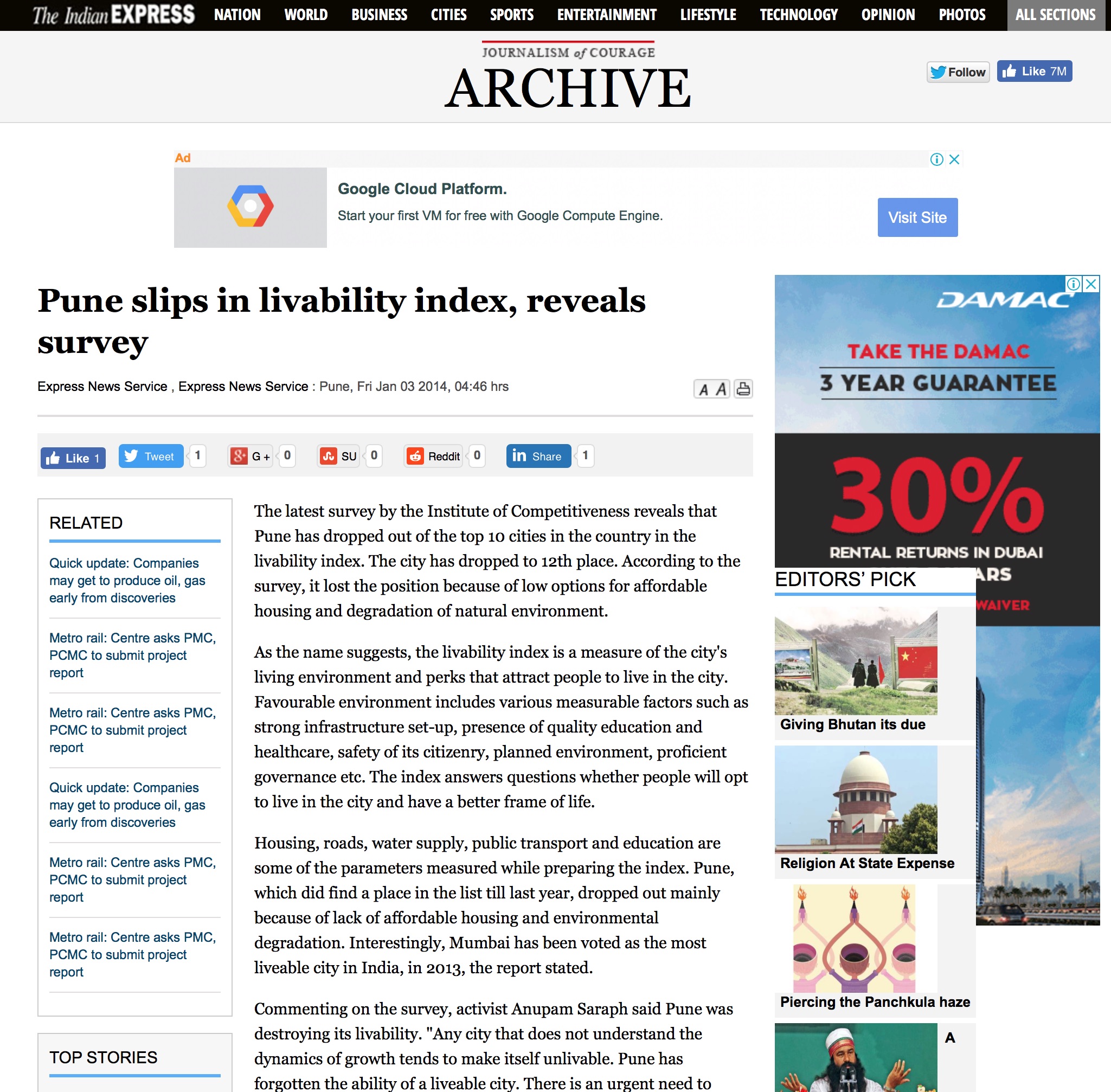 Pune slips in livability index, reveals survey
Pune slips in livability index, reveals surveyanemptytextlline
-
 India's 20 most livable cities, Mumbai is No 1
India's 20 most livable cities, Mumbai is No 1anemptytextlline
-
 Behtareen Shahar: Shaharon Ke Vikas Se Upji Chunautiyaan
Behtareen Shahar: Shaharon Ke Vikas Se Upji Chunautiyaananemptytextlline
-
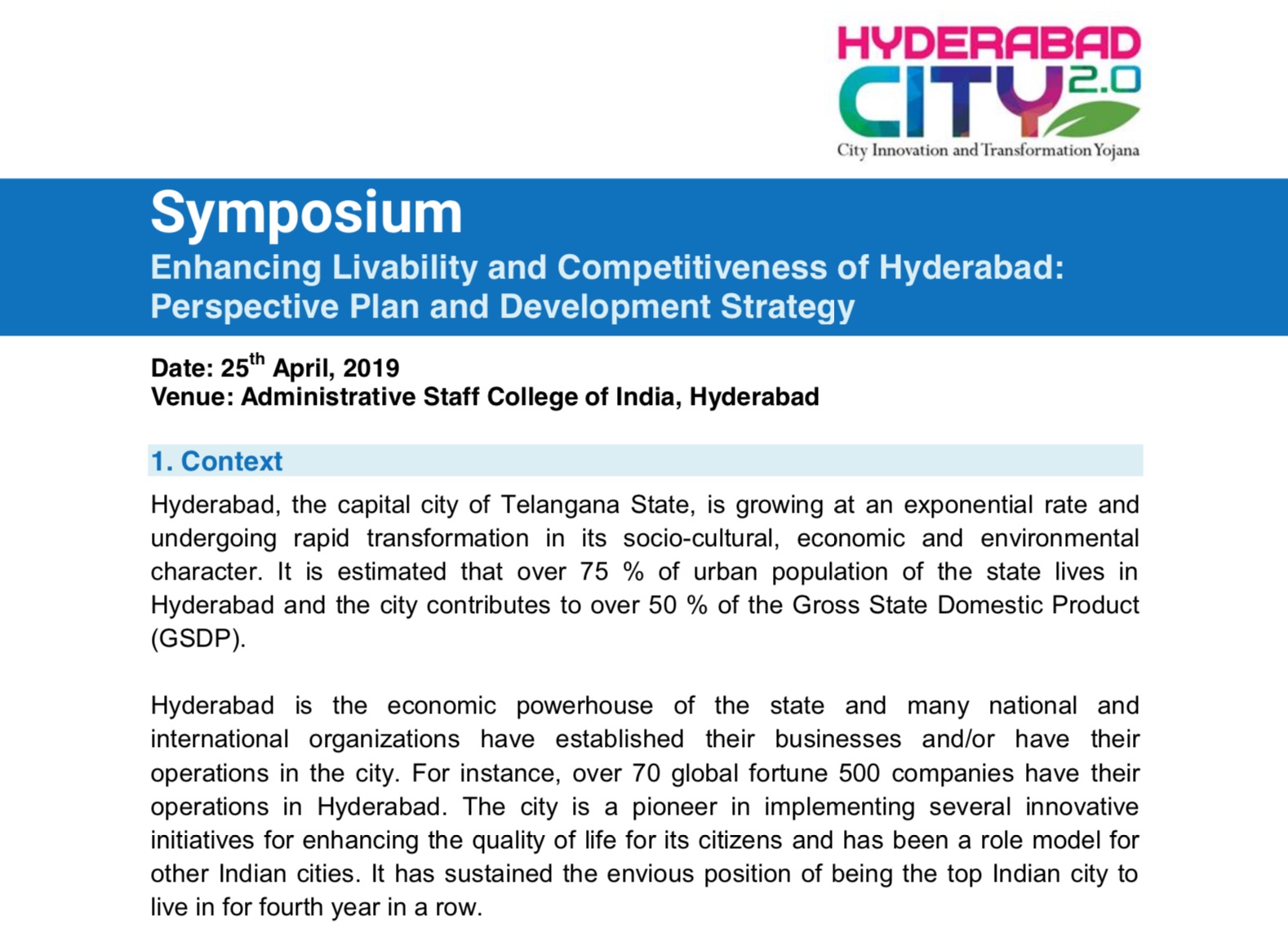 Enhancing Economic Competitiveness of Hyderabad - Practical Solutions
Enhancing Economic Competitiveness of Hyderabad - Practical Solutionsanemptytextlline

